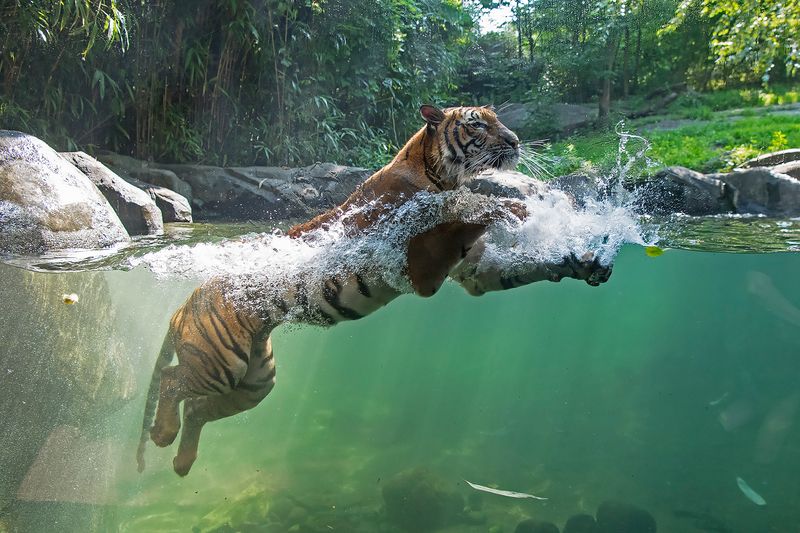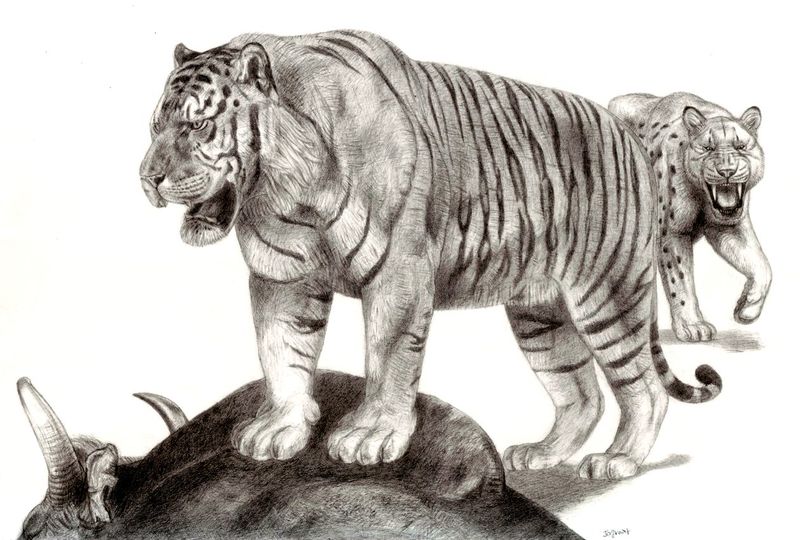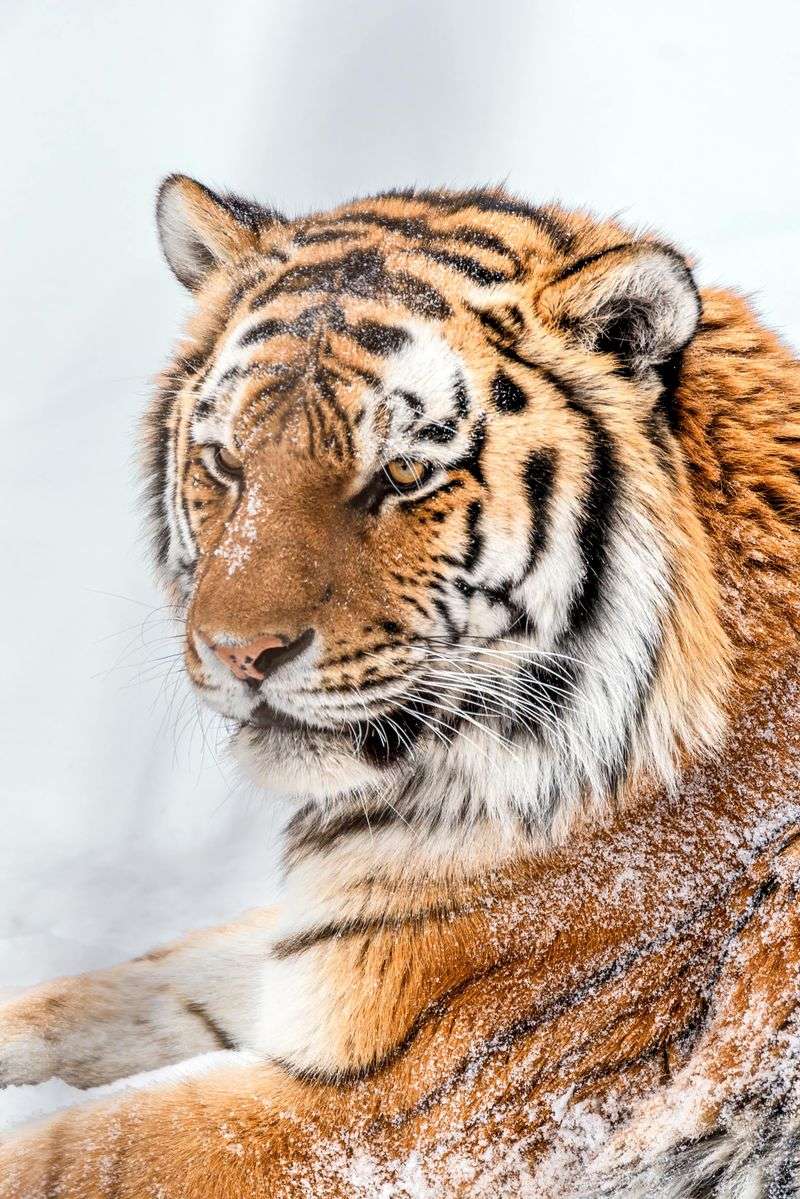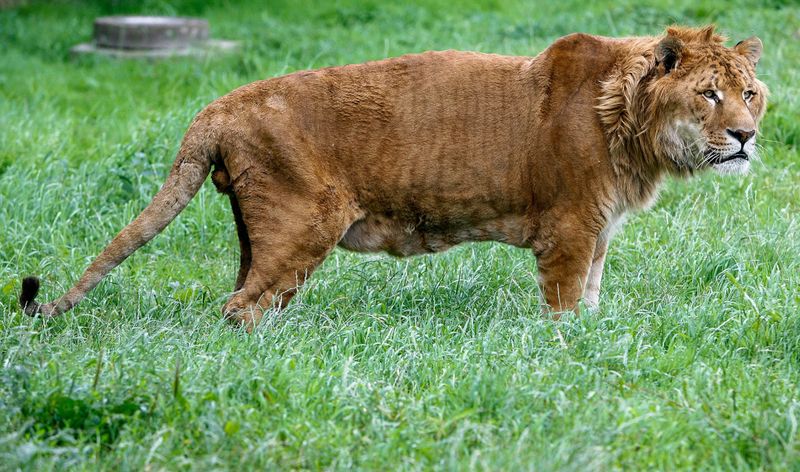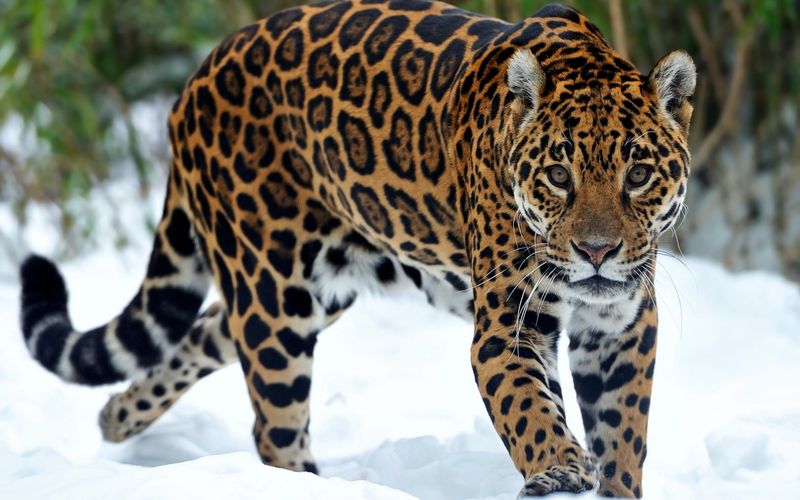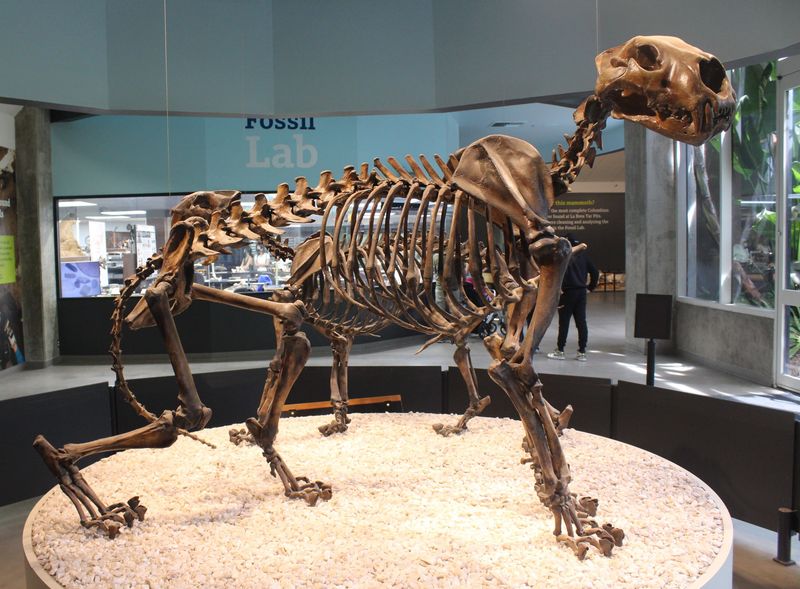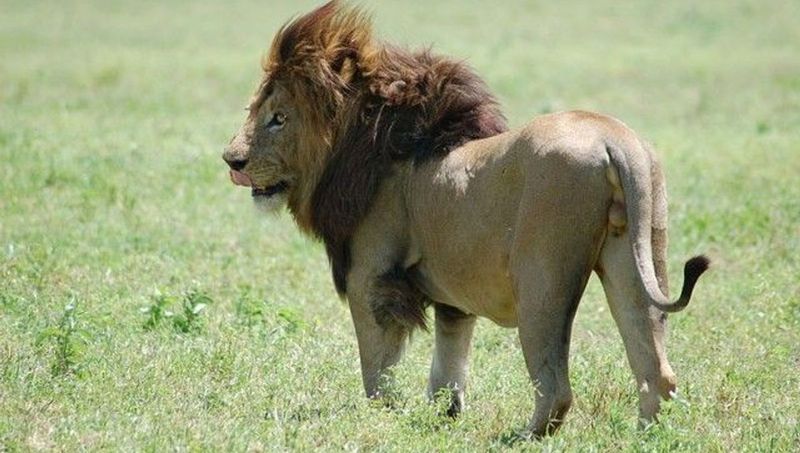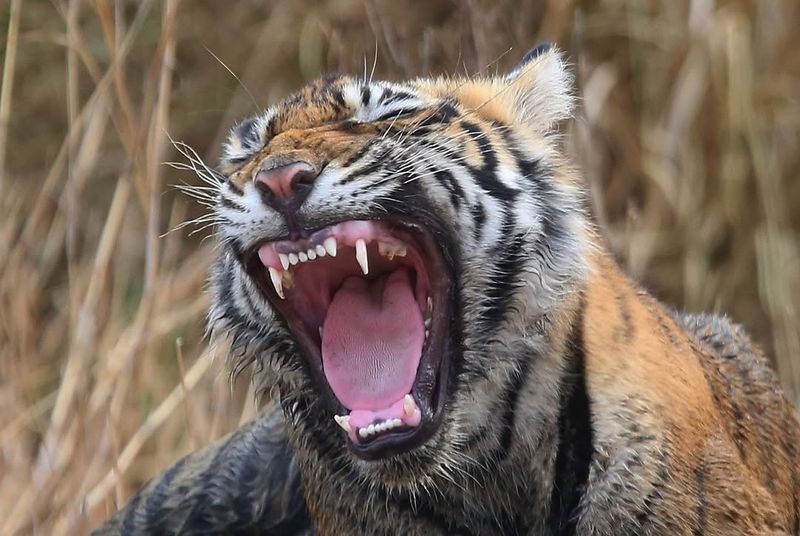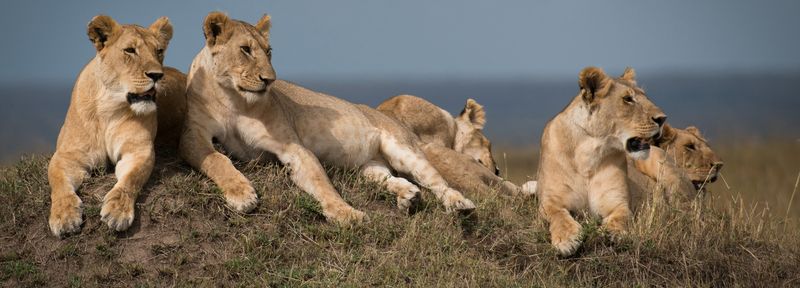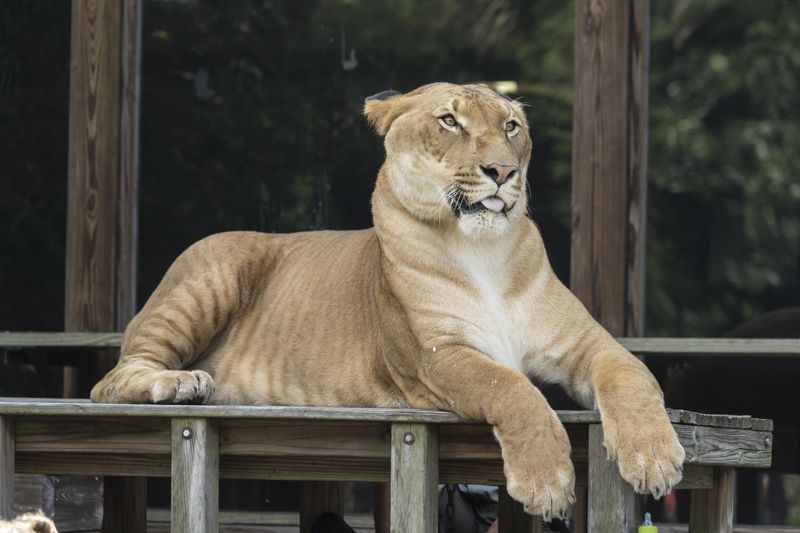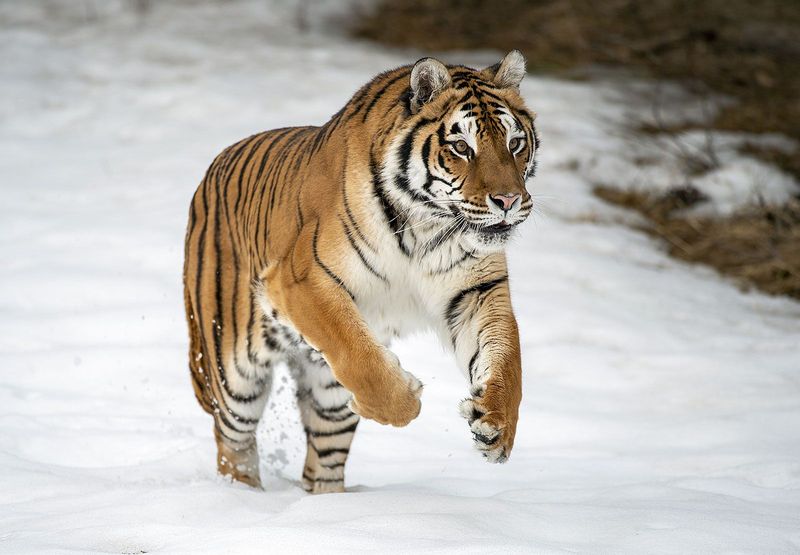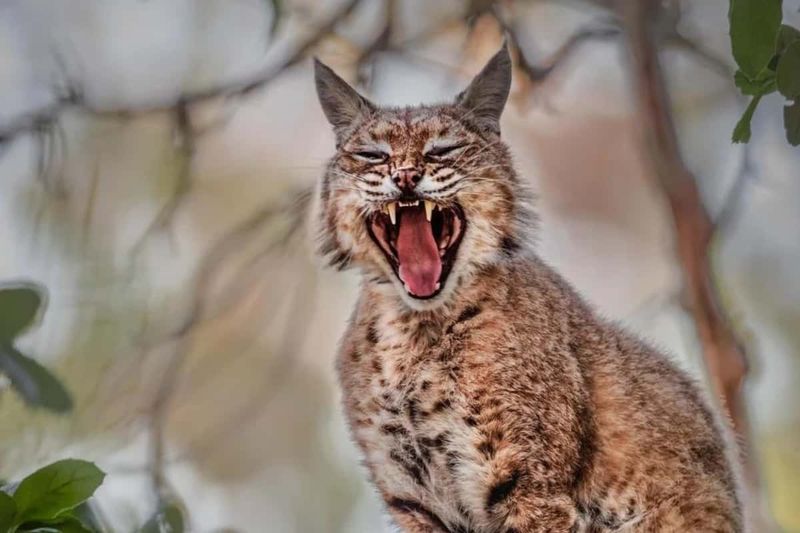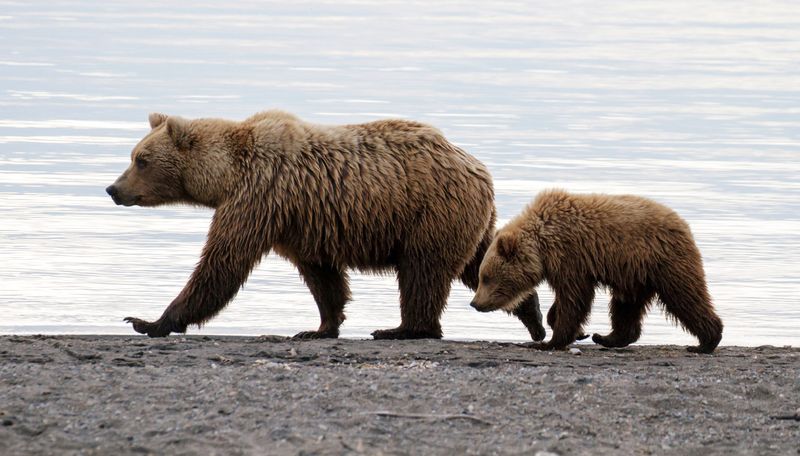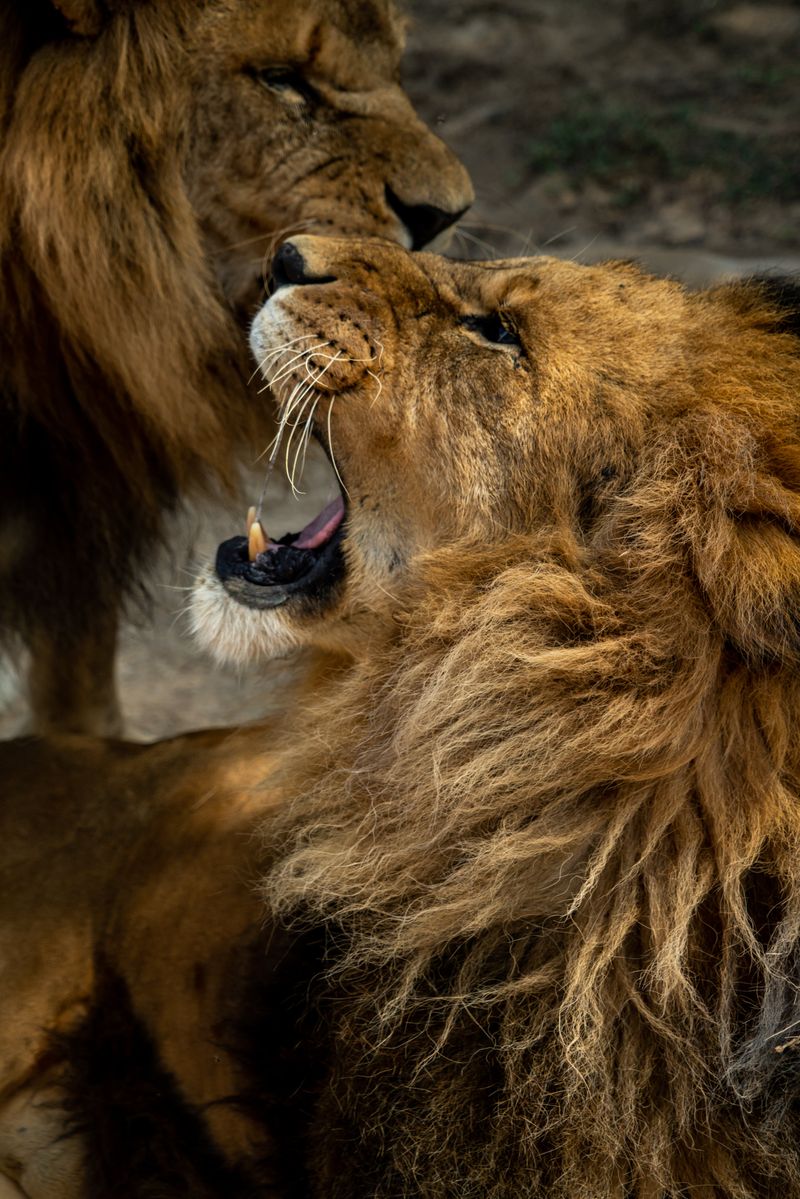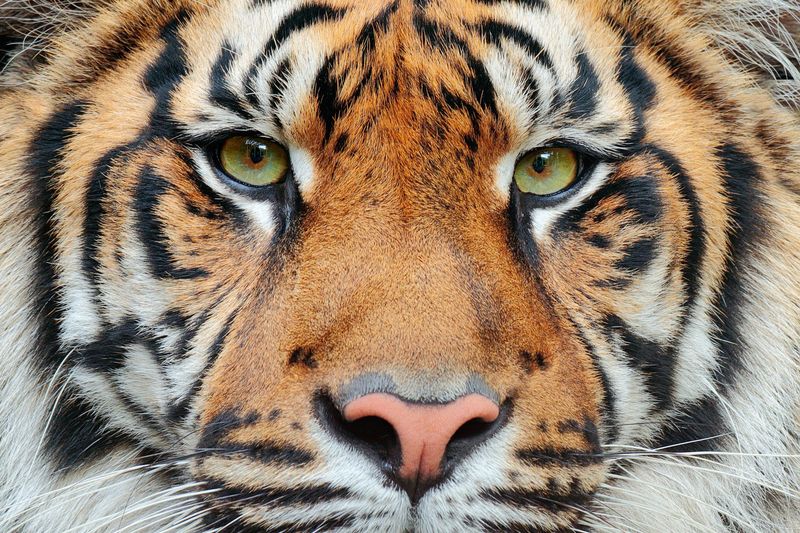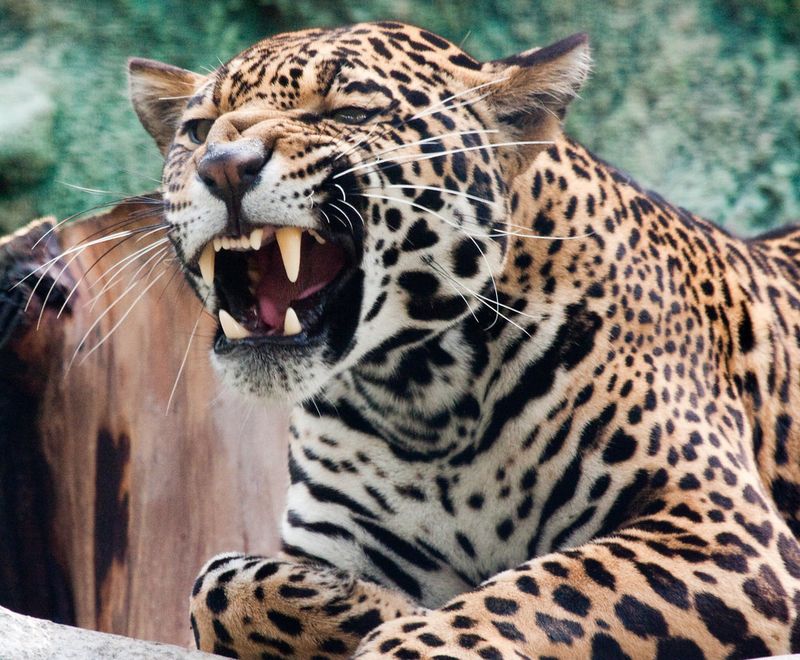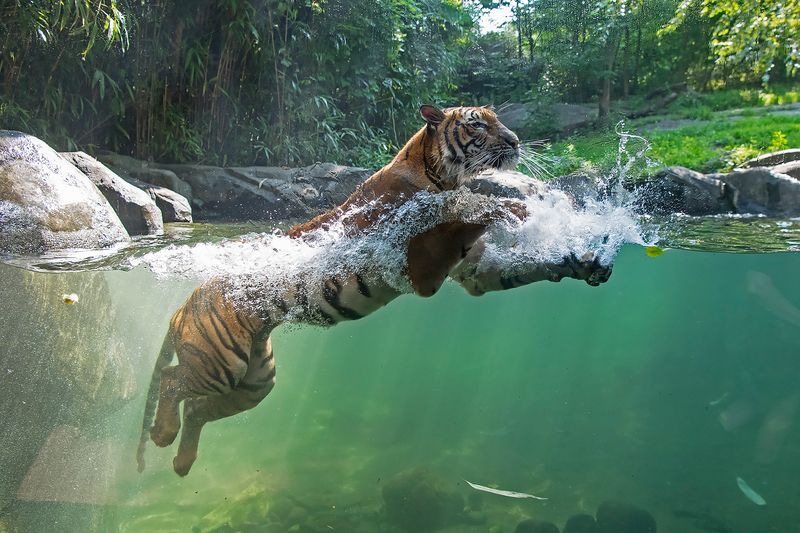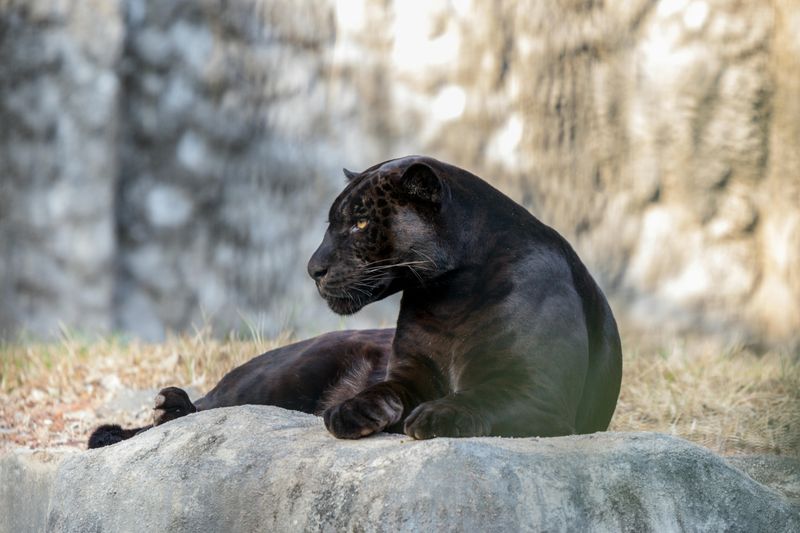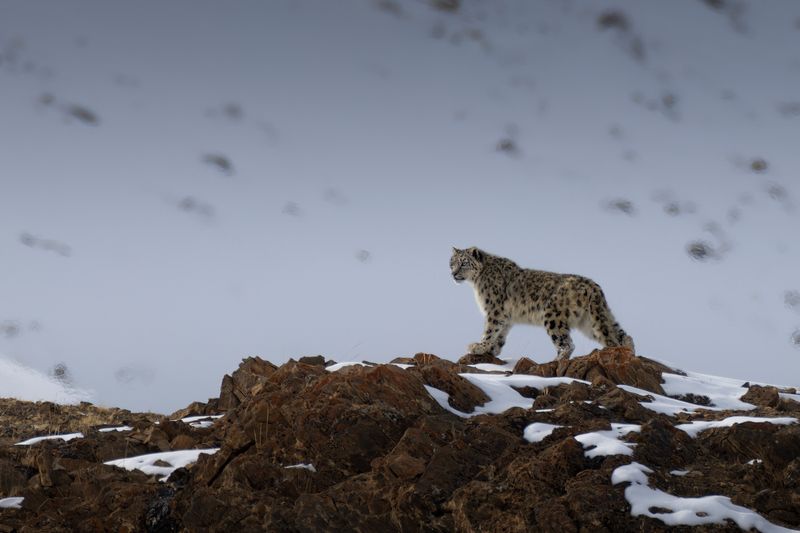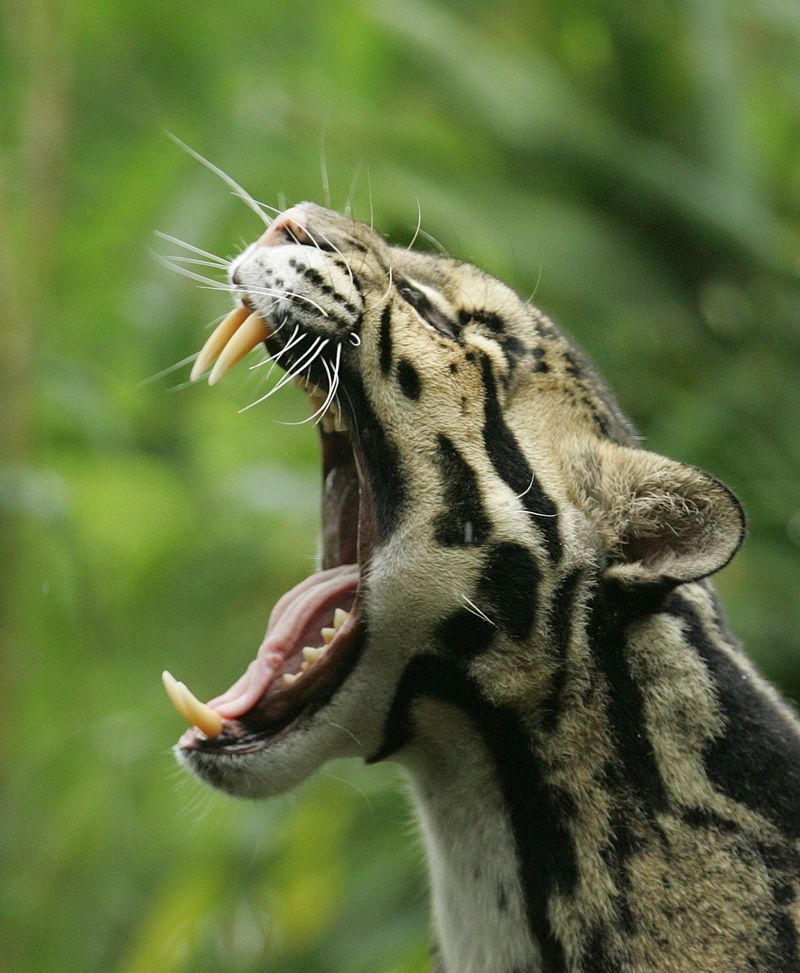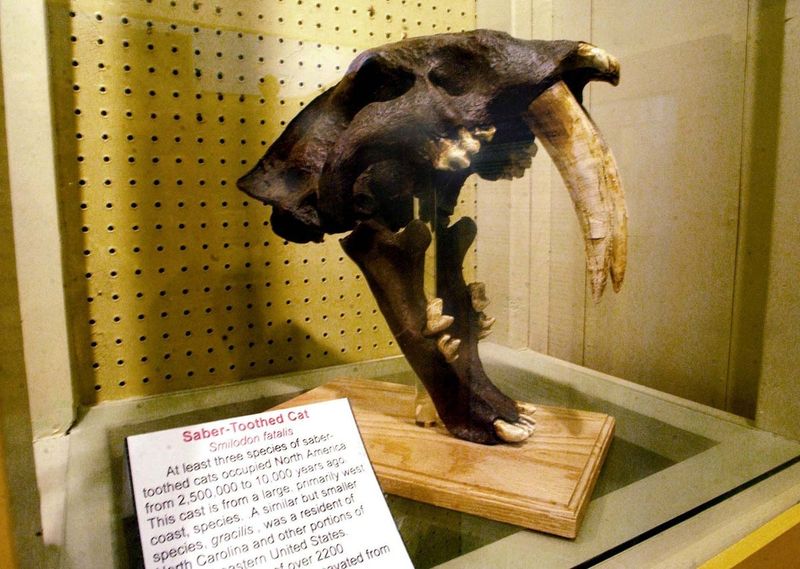📖 Table of Content:
- 1. Ngandong Tigers Were Apex Predators
- 2. Siberian Tigers Have the Thickest Fur
- 3. Ligers Are Bigger Than Both Lions & Tigers
- 4. Pleistocene Jaguars Were Gigantic
- 5. The American Lion Was Even Bigger
- 6. Modern Lions Are Still Massive
- 7. Tigers Have the Strongest Bite Force of Any Cat
- 8. Lions Are the Only Social Big Cats
- 9. The Largest Captive Tiger Lived in the U.S.
- 10. Siberian Tigers Have Huge Territories
- 11. Big Cats Can Roar But Not Purr
- 12. Some Ancient Tigers Were Bigger Than Bears
- 13. Male Lions Grow the Most Impressive Manes
- 14. Sumatran Tigers Are the Smallest Tiger Subspecies
- 15. Jaguars Have the Strongest Bite for Their Size
- 16. Tigers Can Swim for Miles
- 17. Black Panthers Are Just Melanistic Jaguars or Leopards
- 18. Leopards Are the Most Versatile Big Cats
- 19. Clouded Leopards Have the Largest Canines
- 20. The Saber-Toothed Cat Was a Prehistoric Beast
For thousands of years, wild cats have reigned as dominant predators across diverse landscapes, from the dense jungles of Asia to the vast open plains of Africa. These powerful felines have adapted to their environments, becoming some of the most efficient hunters in the animal kingdom. While many species are of moderate size, some have evolved to enormous proportions, dwarfing even the largest modern big cats. Their sheer size and strength have made them legendary among predators.
Throughout history, certain wild cats have reached almost mythical sizes, with some growing far beyond the dimensions of their modern relatives. Among these giants, one species stands out as the largest wild cat to have ever roamed the Earth. Scientists and fossil evidence point to the Ngandong tiger, a prehistoric feline that was significantly larger than today’s tigers and lions. This colossal predator ruled its habitat and was likely capable of taking down enormous prey, reinforcing its status as a true apex predator.
From their immense bite force to their unique adaptations, these feline giants have fascinated researchers and animal enthusiasts alike. Some lived in the ancient past, while others still roam the world today, proving that nature continues to produce some of the most formidable predators. Join us as we explore the world of these extraordinary felines and their incredible feats of power and survival.
1. Ngandong Tigers Were Apex Predators
Once rulers of their domain, Ngandong tigers were apex predators of their time. These formidable felines preyed on large herbivores, including elephants and giant deer. With their massive size and powerful build, they dominated the food chain. Fossil records indicate their prowess in hunting, often targeting the weakest or most vulnerable of herds. Their extinction, around 50,000 years ago, marked the end of an era. Yet, their legacy as fierce hunters continues to capture the imagination of paleontologists. They left an indelible mark on the history of wild cats.
2. Siberian Tigers Have the Thickest Fur
With an extraordinary ability to withstand the frigid temperatures of their environment, Siberian tigers possess the thickest fur of any tiger subspecies. Their dense, long fur acts as both insulation against the harsh Siberian winters and effective camouflage in snowy landscapes, enhancing their stealth while hunting. As they move through the snow, their well-adapted coat allows them to remain nearly undetectable, a crucial advantage for survival. These remarkable adaptations enable them to thrive in one of the planet’s coldest and most unforgiving regions.
3. Ligers Are Bigger Than Both Lions & Tigers
Ligers, the offspring of a male lion and a female tiger, are the largest of all living felines. They can weigh over 1,200 pounds, exceeding both parent species in size. Their unique genetic makeup results in growth spurts that continue throughout their lives. Despite their size, ligers rarely occur in the wild as lions and tigers inhabit different continents. The first breeding between a male lion and female tiger to create a liger is believed to have occurred in the late 1700s. There are currently only about 100 ligers around the world. U.S. houses the most ligers, followed by China. In captivity, they fascinate visitors with their sheer size and strength. Observing a liger is witnessing a rare blend of traits from two of nature’s most powerful cats, a testament to the wonders of genetic diversity.
4. Pleistocene Jaguars Were Gigantic
© Speculative Evolution Wiki – Fandom
During the Ice Age, jaguars were nearly 25% larger than today’s counterparts. These Pleistocene giants roamed the lands with power and agility. Their robust bodies and strong limbs enabled them to hunt larger prey, adapting to the cold climates. Fossils reveal their impressive size and strength, reflecting a time when big cats were even bigger. Their extinction coincided with dramatic climatic shifts and the disappearance of their prey. Yet, these ancient jaguars left a legacy of adaptability, showcasing the evolutionary journey of the species. They were true titans of their time.
5. The American Lion Was Even Bigger
The Panthera atrox was a colossal feline that roamed North America during the Pleistocene Epoch. It was roughly 25% larger than today’s lions, making it one of the largest cats ever. This predator was well-adapted to a range of environments, from forests to grasslands. Its size allowed it to hunt large prey, including mammoths and bison. Fossil evidence highlights its formidable presence and role as a top predator of its time. Though extinct, the American Lion remains a symbol of prehistoric majesty and power, capturing our fascination with ancient wildlife.
6. Modern Lions Are Still Massive
Majestic and powerful, modern lions—particularly males—rule the savannah with their commanding presence and striking manes. The heaviest wild African lion on record weighed an astonishing 690 pounds. Unlike most big cats, lions are highly social, forming prides composed of related females, their offspring, and one or more dominant males. Their teamwork in hunting and strong social bonds contribute to their success as apex predators. However, despite their dominance, they face significant threats from habitat loss and human conflict. Ensuring their protection is essential for preserving the delicate balance of Africa’s ecosystems.
7. Tigers Have the Strongest Bite Force of Any Cat
Among all big cats, tigers—especially Siberian tigers—possess the most powerful bite force. Measuring around 1,050 PSI, their bite is strong enough to crush bones and bring down large prey with ease. This immense strength plays a vital role in their success as hunters, allowing them to take on animals ranging from deer to wild boars. Their powerful jaws are essential for survival, ensuring they secure food in even the harshest environments. Watching a tiger hunt is a testament to nature’s brilliance, showcasing a perfect fusion of power, precision, and agility.
8. Lions Are the Only Social Big Cats
Unlike other solitary felines, lions live in prides, which offer protection and companionship. A pride typically consists of related females and their offspring, along with a few dominant males. This social system enables cooperative hunting, where lionesses work together to bring down prey. It also provides a defense mechanism against rival predators and other lions. Their social bonds are essential for raising cubs and ensuring the pride’s continuity. This unique aspect of lion behavior highlights their adaptability and success as apex predators.
9. The Largest Captive Tiger Lived in the U.S.
Hercules, a liger residing in the U.S., holds the Guinness World Record as the largest living cat. Weighing an astonishing 922 pounds, Hercules is a magnificent blend of lion and tiger traits. His size is awe-inspiring, capturing the attention of visitors and wildlife enthusiasts. Despite his size, Hercules exhibits the calm demeanor typical of large cats. His existence challenges our understanding of big cat genetics and growth. Living in captivity, Hercules serves as an ambassador for conservation, raising awareness about the need to protect these majestic creatures in the wild.
10. Siberian Tigers Have Huge Territories
Siberian tigers, the largest of the tiger subspecies, claim vast territories in the wild. Male territories can span over 1,000 square miles, ensuring access to sufficient prey and resources. These solitary hunters patrol their domains, marking them with scents and scratches. Their expansive territories reflect their need for space to thrive and hunt efficiently. This extensive range also poses challenges, as habitat fragmentation threatens their survival. Protecting these territories is vital for conserving Siberian tigers, allowing them to roam freely and maintain their role as apex predators in the ecosystem.
11. Big Cats Can Roar But Not Purr
Lions, tigers, leopards, and jaguars share the rare ability to roar, a trait made possible by a specialized larynx and a flexible hyoid bone. This deep, resonant sound serves as a vital communication tool, helping these big cats establish territory and interact with others of their species. Unlike smaller felines, they cannot produce a continuous purr. Though they may emit a purr-like sound during exhalation, it lacks the steady rhythm found in domestic cats. Roaring remains one of their most defining behaviors, a symbol of their dominance and power that echoes across the landscapes they rule.
12. Some Ancient Tigers Were Bigger Than Bears
Ancient tigers, like the Ngandong tiger, rivaled the size of today’s grizzly bears. These prehistoric giants roamed the forests of ancient Indonesia, showcasing nature’s diverse evolutionary paths. With their massive shoulders and long bodies, they were equipped to take down large prey. Their size was not just an adaptation for hunting but also a deterrent against other predators. This formidable presence in the ecosystem highlights the adaptability and strength of these ancient felines. While they no longer roam the earth, their legacy lives on in the fossil records, inspiring awe in modern-day scientists.
13. Male Lions Grow the Most Impressive Manes
The iconic mane of a male lion is both a symbol of power and a functional adaptation. Providing a layer of protection during fights, the thick mane helps shield against bites and scratches from rivals. Beyond defense, it also serves as a visual indicator of strength and vitality, with darker, fuller manes being particularly attractive to females. This trait plays a key role in mate selection, ensuring the pride’s genetic strength. Each lion’s mane is unique, reflecting age and social standing within the pride. Seeing a lion with a magnificent mane is a testament to nature’s perfect blend of strength and elegance.
14. Sumatran Tigers Are the Smallest Tiger Subspecies
Despite being the smallest tiger subspecies, Sumatran tigers remain formidable predators. Their compact build, with shorter and more muscular legs, allows them to move skillfully through Sumatra’s dense rainforests. Their dark, closely spaced stripes provide exceptional camouflage, blending seamlessly with the shadows of their lush habitat. Though smaller in size, they are agile and efficient hunters, capable of taking down a range of prey. However, habitat loss and poaching pose severe threats to their survival. Conservation efforts are essential to ensuring the continued existence of these rare and remarkable tigers in the wild.
15. Jaguars Have the Strongest Bite for Their Size
Jaguars, the powerful cats of the Americas, are renowned for their incredibly strong bite, unmatched by any other big cat for their size. This formidable bite force allows them to pierce turtle shells and even crack skulls. This adaptation is crucial in their diverse habitats, from rainforests to wetlands, where they encounter various prey. Jaguars use their strength to ambush unsuspecting animals, delivering a lethal bite to the skull for an instant kill. Observing a jaguar in action highlights its role as a top predator, a master of its environment and a marvel of nature’s design.
16. Tigers Can Swim for Miles
Unlike most cats, tigers are exceptional swimmers, capable of covering several miles in water. Their powerful limbs and streamlined bodies make them adept at navigating rivers and lakes. Swimming is not just a survival skill; it aids in hunting and exploring new territories. In regions like the Sundarbans, tigers often swim between islands, searching for prey and establishing territories. This aquatic prowess sets them apart from other big cats, highlighting their adaptability and resilience. Witnessing a tiger swim is a reminder of their versatility and the diverse skills that ensure their survival in the wild.
17. Black Panthers Are Just Melanistic Jaguars or Leopards
Often shrouded in mystery and legend, black panthers are not a separate species but melanistic variants of jaguars or leopards. Their dark coat results from a rare genetic mutation, enhancing their ability to blend into the shadows, especially during nocturnal hunts. This natural camouflage gives them an advantage as stealthy and effective predators. Their striking appearance has long fascinated humans, inspiring stories of secrecy and power. Despite their unique coloration, they share the same behaviors and habitats as their non-melanistic counterparts. Seeing a black panther in the wild is a rare glimpse into nature’s remarkable diversity and adaptability.
18. Leopards Are the Most Versatile Big Cats
Leopards are incredibly adaptable, thriving in various environments from deserts to dense rainforests. This versatility makes them the most widespread of the big cats, found across Africa and Asia. Their ability to climb trees and swim allows them to exploit diverse habitats. Leopards are solitary hunters, using stealth and strength to ambush prey. Their spotted coat provides excellent camouflage, aiding in both hunting and evasion. This adaptability has helped leopards survive in changing environments, a testament to their resilience and resourcefulness. Protecting their habitats ensures the continuation of these remarkable predators.
19. Clouded Leopards Have the Largest Canines
With the longest canine teeth relative to body size of any living feline, clouded leopards boast fangs reminiscent of ancient sabre-toothed cats. These powerful teeth are perfectly adapted for gripping and securing prey. Native to the rainforests of Southeast Asia, they are elusive creatures, rarely spotted in the wild. Their arboreal lifestyle and specialized adaptations make them a unique focus of scientific study. Despite their name, they are not closely related to true leopards. As habitat loss threatens their survival, conservation efforts are crucial to preserving these remarkable felines and their distinct evolutionary lineage.
20. The Saber-Toothed Cat Was a Prehistoric Beast
The saber-toothed cat, known as Smilodon, was a fearsome predator of the prehistoric world. With massive fangs, it weighed up to 900 pounds. These iconic teeth were used for precision killing, targeting soft tissue in large prey. Smilodon thrived in diverse habitats, from woodlands to grasslands. Fossils reveal their social nature, living in family groups. Despite their formidable adaptations, they faced extinction as climate and prey availability changed. Today, they remain figures of fascination, epitomizing the grandeur of prehistoric wildlife. Their legacy endures in museums and popular culture, a reminder of nature’s ever-changing face.
